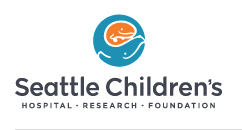Inhaled Iloprost as an Adjunct to Inhaled Nitric Oxide in Pediatric Critical Care Patients
| Status: | Completed |
|---|---|
| Conditions: | High Blood Pressure (Hypertension), Cardiology, Hospital, Pulmonary |
| Therapuetic Areas: | Cardiology / Vascular Diseases, Pulmonary / Respiratory Diseases, Other |
| Healthy: | No |
| Age Range: | Any |
| Updated: | 2/4/2013 |
| Start Date: | September 2009 |
| End Date: | September 2012 |
| Contact: | Delphine Yung, MD |
| Email: | delphine.yung@seattlechildrens.org |
| Phone: | (206) 987-2015 |
A Randomized, Double Blind, Placebo-controlled Pilot Study of the Safety and Effective Dosing of Inhaled Iloprost in Pediatric Patients With Pulmonary Hypertension Treated With Inhaled Nitric Oxide
The purpose of this study is to determine whether inhaled iloprost is safe and effective in
pediatric patients with pulmonary hypertension who are sick in the intensive care unit.
Inhaled nitric oxide (NO) is used in the management of all causes of pediatric pulmonary
hypertension. Despite widespread use of nitric oxide to treat critically ill
mechanically-ventilated pediatric patients with pulmonary hypertension, response to therapy
is not universal. Nitric oxide fails to improve oxygenation in approximately 30% of these
patients. Nonresponders to nitric oxide have few treatment options. Iloprost is the only
other medication approved for inhalational delivery in the treatment of pulmonary
hypertension. Inhalation therapy for pulmonary vasodilatation in critically ill children is
inherently more attractive than oral or intravenous therapies due to the ability to deliver
medication directly to the lung and to decrease systemic effects. The use of inhaled
iloprost has been reported to decrease pulmonary vascular resistance in many pediatric
pathologic settings, including combination therapy with nitric oxide.
Inclusion Criteria:
- Birth to 21 years of age
- Diagnosis of pulmonary hypertension must fit into one of three categories
- neonatal hypoxic respiratory failure
- congenital heart disease
- acquired/acute respiratory distress syndrome (lung disease)
- Parents of subject must be able and willing to give written informed consent
and comply with the requirements of the study protocol and must authorize release and
use of protected health information
- Patients who remain on nitric oxide at 12 to 18 hours after initiation
- Patients who are transferred to an intensive care unit already on inhaled nitric
oxide from another institution will be treated as if nitric oxide therapy was started
at the time of admission to the unit
- Patients will be enrolled only after a clinical decision to treat with nitric oxide
has been made by the treating physician
Exclusion Criteria:
- Corrected gestational age less than 35 weeks
- Patients with potentially fatal non-cardiopulmonary co-morbidities (e.g. hepatic,
neurologic, renal)
- Known or suspected fatal genetic syndrome
- Patient with cardiac failure secondary to significant left-sided obstructive lesions
- Patient on ECMO
- Patient on any other form of prostacyclin
- Patient on any medication with known NO production, e.g., nitroprusside
- Patient on an endothelin receptor antagonist (e.g. bosentan)
- Patient on sildenafil
- Patient on whom clinicians do not agree to follow standard inhaled nitric oxide
weaning protocol
- Patients who have known hypersensitivity to prostacyclin or any of its components
- Patient who is pregnant
- Patient with platelet count less than 50,000
We found this trial at
1
site
Seattle Children's Hospital Seattle Children’s Hospital specializes in meeting the unique physical, emotional and developmental...
Click here to add this to my saved trials
